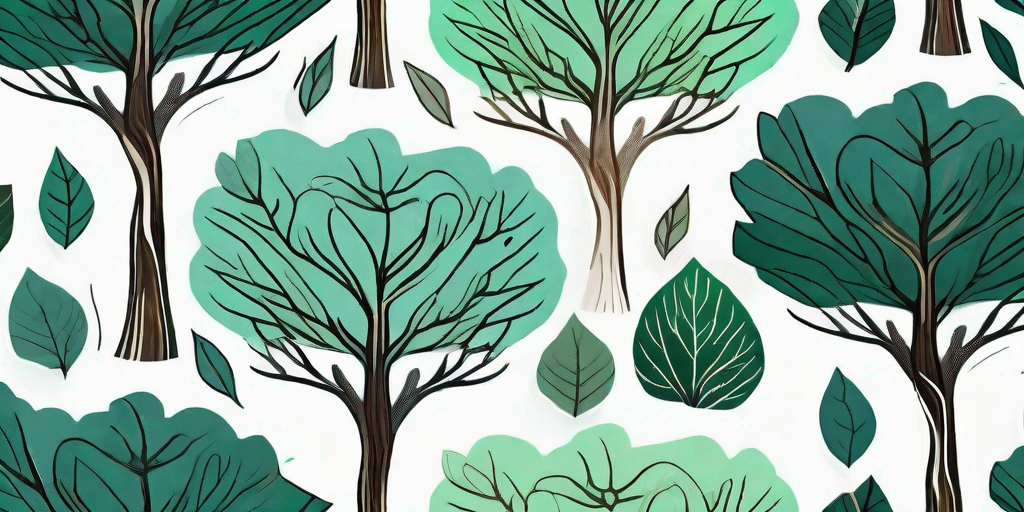
Sandalwood, the aromatic heavyweight of the plant world, has been tickling our olfactory senses for millennia. This sacred plant, with its rich, woody scent, has been a staple in religious rituals, skincare regimens, and perfumes. But what makes sandalwood so special? Buckle up, dear reader, as we embark on a fragrant journey to uncover the mysteries of sandalwood.
The History of Sandalwood: A Tale as Old as Time
Our journey begins in the ancient times, where sandalwood was as precious as gold. The Egyptians, known for their love of all things aromatic, used sandalwood in embalming practices. Meanwhile, in the East, it was a crucial part of Buddhist and Hindu rituals. It's safe to say, sandalwood was the 'it' plant of the ancient world.
Fast forward to the Middle Ages, sandalwood made its way into the hearts (and noses) of Europeans. It was the olfactory equivalent of a knight in shining armor, rescuing the European nobility from the stench of the unwashed masses. The rest, as they say, is history.
The Science of Sandalwood: It's All in the Wood
Now, let's put on our lab coats and delve into the science of sandalwood. The magic of sandalwood lies in its heartwood. This isn't some romantic metaphor, but a botanical fact. The heartwood, the innermost part of the tree, is where the aromatic compounds are concentrated.
These compounds, known as sesquiterpenes, give sandalwood its distinctive scent. They also have antimicrobial properties, making sandalwood a natural preservative. It's like nature's version of a Swiss Army knife, if the Swiss Army knife smelled like a heavenly forest.
The Sandalwood Tree: Not All Woods are Created Equal
The term 'sandalwood' is a bit of a misnomer, as it refers to several species of trees. The most prized of these is the Indian sandalwood, known scientifically as Santalum album. This tree is the Rolls Royce of sandalwoods, producing the highest quality oil.
However, due to overharvesting, Indian sandalwood is now a threatened species. As a result, other species, like the Australian sandalwood (Santalum spicatum), have stepped into the limelight. While they might not be as prestigious as their Indian cousin, they're still pretty darn good at smelling fantastic.
Uses of Sandalwood: More Than Just a Pretty Scent
Sandalwood is like the multi-talented child prodigy of the plant world. It's not just good at one thing; it's good at a lot of things. Let's take a look at some of the uses of this versatile plant.
Religious Rituals
In Hinduism, sandalwood paste is used in rituals and ceremonies. It's also used to make malas, or prayer beads. In Buddhism, the scent of sandalwood is believed to transform one's desires and maintain a person's alertness while meditating. It's like a spiritual energy drink, minus the caffeine crash.
Perfumery
In the world of perfumery, sandalwood is a beloved ingredient. Its warm, creamy scent makes it a perfect base note in many fragrances. It's like the supporting actor who steals the show. Plus, it has excellent fixative properties, which means it helps the fragrance last longer. It's the gift that keeps on giving.
Skincare
Sandalwood oil has been used in Ayurvedic skincare for centuries. It's known for its soothing and cooling properties, making it a great treatment for rashes, acne, and sunburn. It's like having a mini spa in a bottle.
FAQs about Sandalwood
- Is sandalwood endangered?
Yes, certain species like the Indian sandalwood are threatened due to overharvesting. However, efforts are being made to cultivate sandalwood sustainably.
- Can I grow a sandalwood tree in my backyard?
Unless you live in a tropical or subtropical region and have a lot of patience (sandalwood trees take at least 15 years to mature), it's probably not feasible.
- Why is sandalwood so expensive?
It's a combination of high demand, slow growth rate, and overharvesting. Plus, the best quality oil comes from trees that are at least 40 years old. That's a lot of waiting for a tree.
Conclusion: The End of Our Fragrant Journey
And so, we've reached the end of our journey into the world of sandalwood. From its ancient origins to its scientific secrets, we've uncovered the many facets of this fascinating plant. Whether you're a perfume connoisseur, a skincare enthusiast, or a tree hugger, there's no denying the allure of sandalwood.
So, the next time you catch a whiff of that warm, woody scent, take a moment to appreciate the rich history and science behind it. After all, you're not just smelling a tree; you're experiencing a piece of olfactory history.















